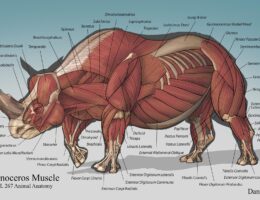A typical fish has the following labeled body parts in its external anatomy:
- Fins: Fins are the most distinguishing feature of a fish. They help the fish move through water and maintain balance. There are several types of fins, including dorsal fin, caudal fin, pectoral fins, and pelvic fins.
- Mouth: The mouth of a fish is used for feeding. It is usually located on the ventral side of the head, and its shape and size can vary between different fish species.
- Gills: Fish use gills to extract oxygen from water. They are located on the sides of the fish’s head and are covered by a bony flap called the operculum.
- Eyes: The eyes of a fish are located on either side of the head and are used for vision. Some fish have highly developed eyes that can see in low-light conditions or detect polarized light.
- Scales: Most fish have scales that protect their body from predators and parasites. The scales come in a variety of shapes and sizes and can be used to identify different fish species.
- Lateral line: The lateral line is a sensory organ that runs along the side of the fish’s body. It helps the fish detect changes in water pressure and vibrations, which can be useful for detecting prey or avoiding predators.
- Swim bladder: The swim bladder is a gas-filled organ that helps the fish control its buoyancy. By regulating the amount of gas in the swim bladder, the fish can stay at a particular depth in the water column.
- Anus: The anus is the opening through which the fish expels waste.
- Genital opening: The genital opening is where the fish releases eggs or sperm for reproduction.
Overall, these labeled parts of a fish’s anatomy work together to help it survive and thrive in its aquatic environment.



